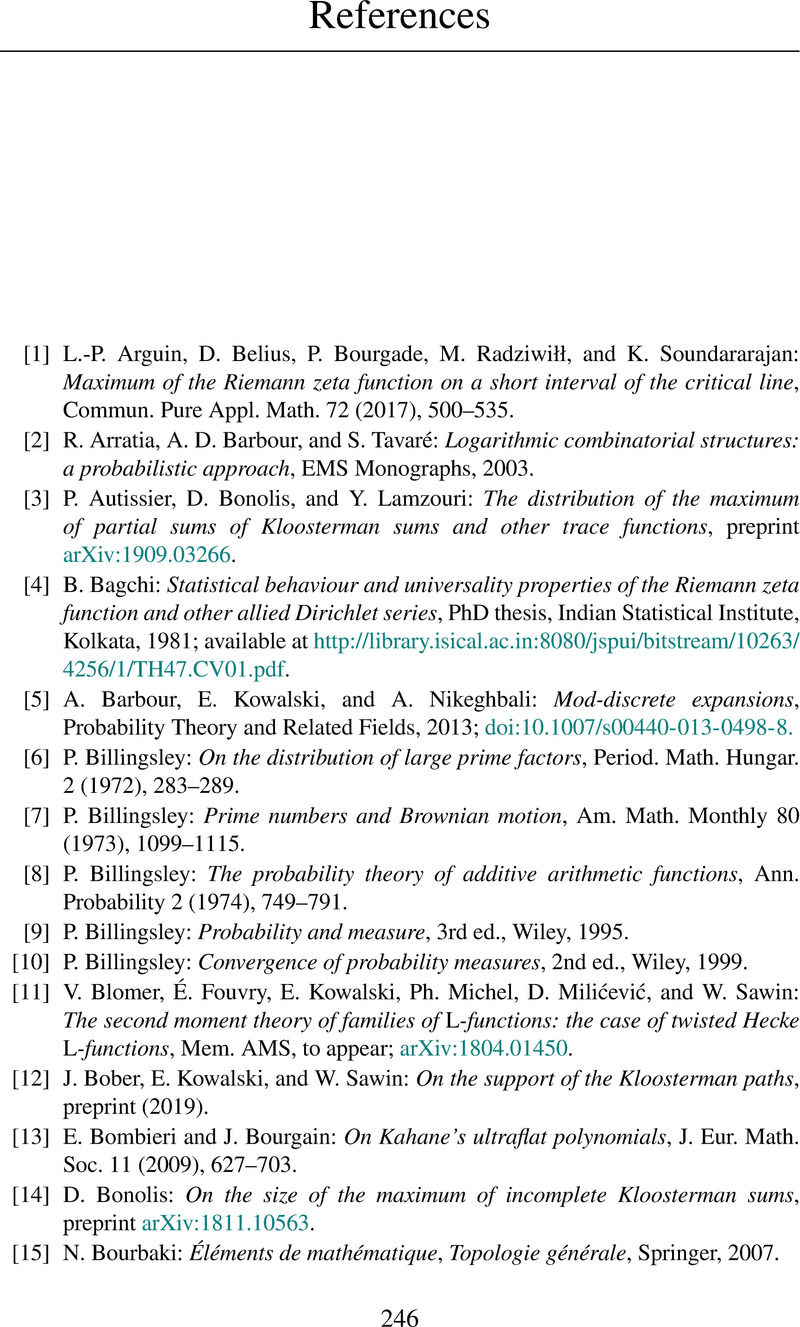Book contents
- Frontmatter
- Dedication
- Contents
- Preface
- Prerequisites and Notation
- 1 Introduction
- 2 Classical Probabilistic Number Theory
- 3 The Distribution of Values of the Riemann Zeta Function, I
- 4 The Distribution of Values of the Riemann Zeta Function, II
- 5 The Chebychev Bias
- 6 The Shape of Exponential Sums
- 7 Further Topics
- Appendix A Analysis
- Appendix B Probability
- Appendix C Number Theory
- References
- Index
- References
References
Published online by Cambridge University Press: 04 May 2021
- Frontmatter
- Dedication
- Contents
- Preface
- Prerequisites and Notation
- 1 Introduction
- 2 Classical Probabilistic Number Theory
- 3 The Distribution of Values of the Riemann Zeta Function, I
- 4 The Distribution of Values of the Riemann Zeta Function, II
- 5 The Chebychev Bias
- 6 The Shape of Exponential Sums
- 7 Further Topics
- Appendix A Analysis
- Appendix B Probability
- Appendix C Number Theory
- References
- Index
- References
Summary

- Type
- Chapter
- Information
- An Introduction to Probabilistic Number Theory , pp. 246 - 251Publisher: Cambridge University PressPrint publication year: 2021



